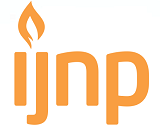THE FACTORS THAT INFLUENCE THE IMPLEMENTATION OF SMOKE FREE CAMPUS POLICY IN UNIVERSITY OF MUHAMMADIYAH YOGYAKARTA
DOI:
https://doi.org/10.18196/ijnp.v2i2.2072Abstract
Smoking is one of the problems in society today that difficult to resolve. There are 6 million deaths each year are caused by smoking. The number of smokers in Indonesia continues to grow, which is dominated by the age of 15 years and above. To overcome these problems the government issued a policy banning smoking in the learning process. Universitas Muhammadiyah Yogyakarta (UMY) was one of the places that already have implemented smoke-free campus since 2011, but until now there is smoke in campus. This study was to determine the factors that affect the implementation Kawasan Bersih Bebas Asap Rokok (KBBR) in UMY.This study was a qualitative research with phenomenological approach. The data were taken using the method discussion focus groups, depth interviews and observation. Participants in this study were determined by purposive sampling counted 20 participants consisting of students and campus employees in UMY. The validity of the data in this study was done by using triangulation, triangulation methods and peer debriefing. Data analysis was performed with the help of software open code version 4.2. These results indicate that the factors that affect the implementation KBBR in UMY was knowledge of KBBR, attitudes toward KBBR, lack of socialization and prohibition signs of KBBR, the absence of strict sanctions against violators KBBR and environmental influences. This shows that UMY needs to improve socialization and give strict punishment for violation of KBBR.Keywords: Factors, KBBR, UMY
References
Kementrian Kesehatan RI (2013). Riset kesehatan dasar (Riskesdas) 2013. Jakarta
Widiansyah, M. (2014). Faktor-faktor Penyebab Perilkau Remaja Perokok di Desa Sidorejo Kabupaten Penajam Paser Utara. eJurnal Sosiologi (4): 1-12. Diakses tanggal 23 Februari 2016, dari htp://ejournal.sos.fisip-unmul.ac.id/ site/wp-content/uploads/2014/10/penting%20 (10-02-14-12-04-55).pdf
Armayati, L. (2014). Faktor-faktor Yang Mempengaruhi Kepatuhan Mahasiswa dan Karyawan Terhadap Peraturan Kawasan Tanpa Rokok di Lingkungan Kampus Fakultas Psikologi Universitas Islam Riau. Jurnal RAT vol3.No3. Diakses 1Agustus 2016, dari htps:// core.ac.uk/download/pdf/11735658.pdf
Firdiana, A. (2013) . Gambaran Sikap Mahasiswa Unpad Terhadap Kawasan Tanpa Rokok di Kampus Unpad. Karya Tulis Ilmiah strata satu Universitas Padjadjaran.
Nugroho, P. (2015). Evaluasi Implementasi Kawasan Tanpa Rokok (KTR) Fakultas Ilmu Kesehatan Universitas Muhammadiyah Surakarta. Karya Tulis Ilmiah strata satu Universits Muhammadiyah Surakarta.
Azkha, N. (2013). Studi Efektivitas Penerapan Kebijakan Perda Kota Tentang Kawasan Tanpa Rokok (KTR) dalam Upaya Menurunkan Perokok Aktif di Sumatera Barat. Jurnal Kebijakan Kesehatan Indonesia. Diakses 20 Desember 2015, dari htp://jurnal.ugm.ac.id/ jkki/article/download/3201/2810
Prabandadi, Y., Nawi., & Padmawati. (2009). Kawasan Tanpa Rokok Sebagai Alternatif Pengendalian Tembakau Studi Efektivitas Penerapan Kebijakan Kampus Bebas Rokok Terhadap Perilaku dan Status Merokok Mahasiswa di Fakultas Kedokteran UGM, Yogyakarta. Jurnal Manajemen Pelayanan Kesehatan Volume 12 Hal 218-225.
Widiansyah, M. (2014). Faktor-faktor Penyebab Perilkau Remaja Perokok di Desa Sidorejo Kabupaten Penajam Paser Utara. eJurnal Sosiologi (4): 1-12. Diakses tanggal 23 Februari 2016, dari htp://ejournal.sos.fisip-unmul.ac.id/ site/wp-content/uploads/2014/10/penting%20 (10-02-14-12-04-55).pdf
Downloads
Issue
Section
License
License
Articles published in the IJNP (Indonesian Journal of Nursing Practices) are licensed under a Attribution 4.0 International (CC BY 4.0) license. You are free to:
- Share — copy and redistribute the material in any medium or format.
- Adapt — remix, transform, and build upon the material for any purpose, even commercially.
This license is acceptable for Free Cultural Works. The licensor cannot revoke these freedoms as long as you follow the license terms. Under the following terms:
Attribution — You must give appropriate credit, provide a link to the license, and indicate if changes were made. You may do so in any reasonable manner, but not in any way that suggests the licensor endorses you or your use.
- No additional restrictions — You may not apply legal terms or technological measures that legally restrict others from doing anything the license permits.
Copyright
Authors who publish with IJNP (Indonesian Journal of Nursing Practices) agree to the following terms:
- Authors retain copyright and grant IJNP (Indonesian Journal of Nursing Practices) the right of first publication with the work simultaneously licensed under an Attribution 4.0 International (CC BY 4.0) that allows others to remix, adapt and build upon the work with an acknowledgment of the work's authorship and of the initial publication in IJNP (Indonesian Journal of Nursing Practices).
- Authors are permitted to copy and redistribute the journal's published version of the work (e.g., post it to an institutional repository or publish it in a book), with an acknowledgment of its initial publication in IJNP (Indonesian Journal of Nursing Practices).














